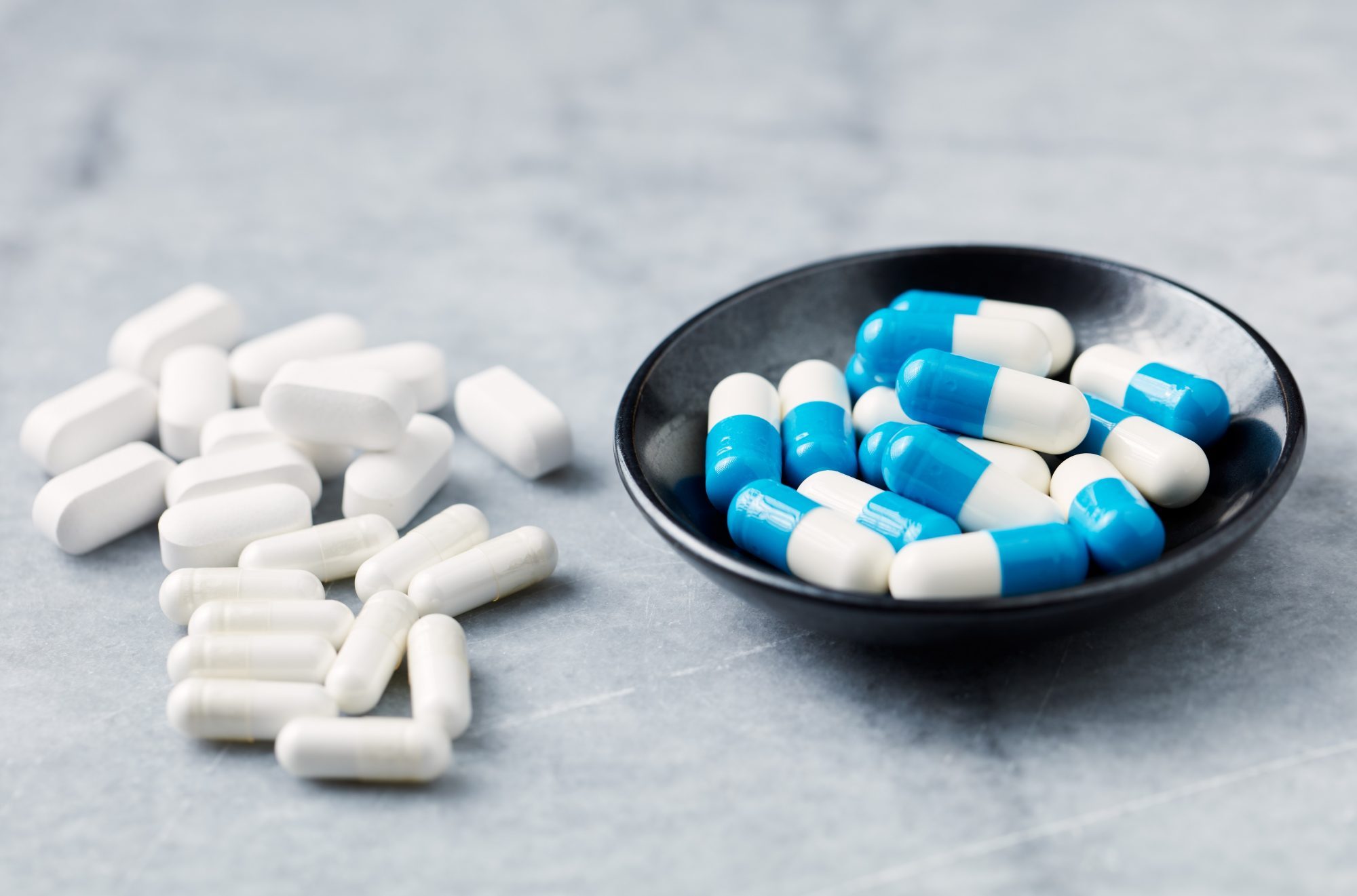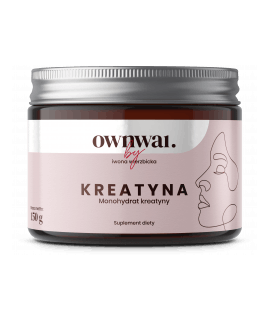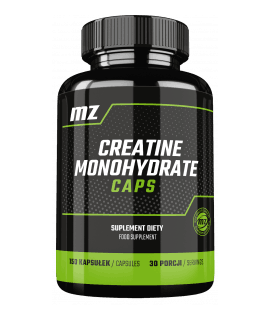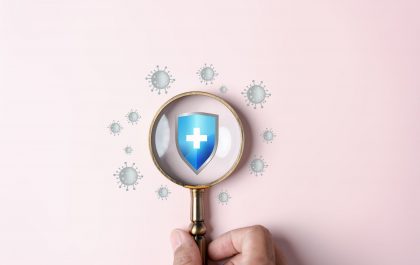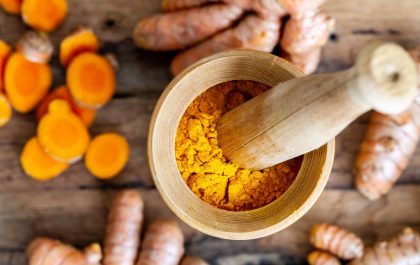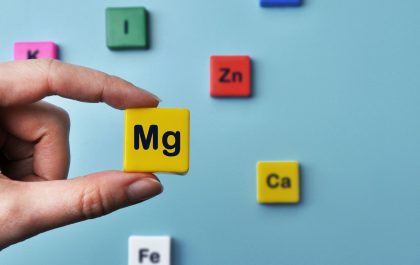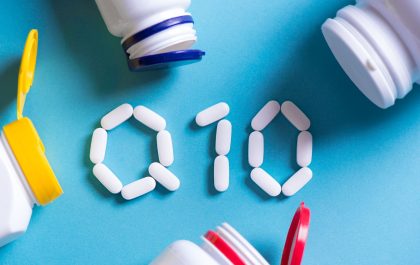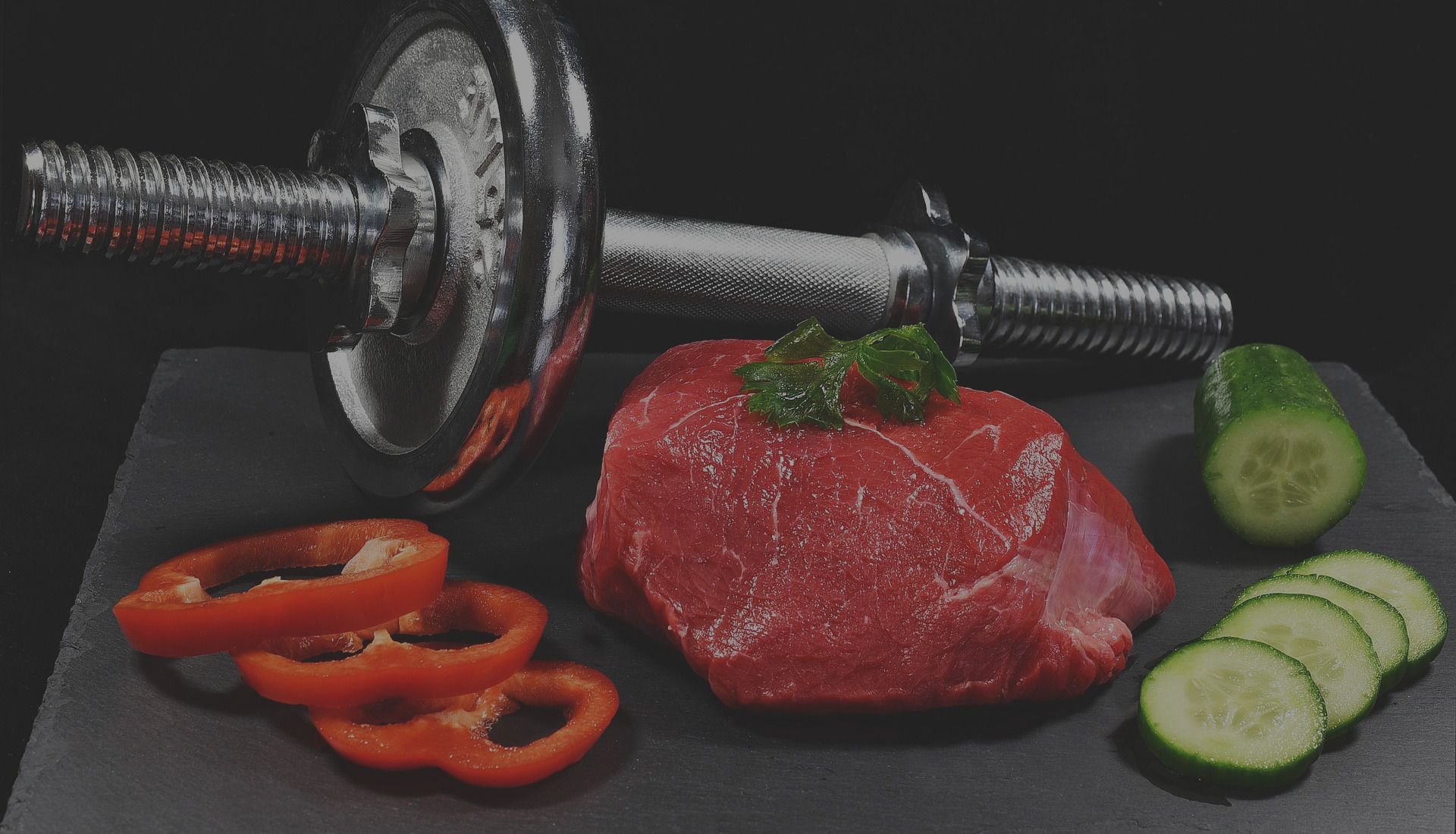Poprzednia część artykułu wskazywała na podstawowe znaczenie biologiczne, genezę stosowania i przemiany biochemiczne kreatyny w organizmie człowieka. Przykładem bogatej funkcjonalności tego związku było opisanie wpływu jego niedoborów na mózg. Jakie jeszcze znaczenie ma suplementacja kreatyną i czy jest korzystna tylko dla mięśni?
Niedokrwienie i niedotlenienie
Kiedy do mózgu nie dociera wystarczająca ilość krwi mówimy o udarze niedokrwiennym. Udar niedokrwienny jest równoznaczny z upośledzonym transportem tlenu do mózgu. Druga postać udaru dotyczy rozlewu krwi. Wylew może być zlokalizowany bezpośrednio w mózgu lub w przestrzeniach znajdujących się z mózgiem w bliskim położeniu. Niedokrwienie występuje częściej niż wylew i może być wywołane m.in. miażdżycą, zawałem serca, zakrzepami, nieprawidłową budową serca lub migotaniem przedsionków.
Okazuje się, że kreatyna może mieć zastosowanie w przypadku udaru niedokrwiennego, chociaż raczej w formie profilaktyki niż leczenia. Wykazuje ona właściwości ochronne dla komórek nerwowych nawet w czasie wystąpienia udaru 14,103,111 i może z powodzeniem ograniczać wielkość szkód występujących na skutek braku dopływu krwi 104. Suplementacja jednak powinna dotyczyć przede wszystkim okresu przed wystąpieniem udaru.
Z drugiej strony niedobór tlenu docierającego do mózgu nie jest spotykany wyłącznie podczas udaru niedokrwiennego. Zjawisko występuje w naturalnych okolicznościach, np. podczas znacznych zmian ciśnienia atmosferycznego i objawia się m.in. zaburzeniami uwagi, koncentracji, mowy, zawrotami głowy, poczuciem splątania. Takie sytuacje mogą dotyczyć osób uprawiających wspinaczkę wysokogórską 142,145.
Istnieje badanie, w którym sprawdzano czy w przypadku niedotlenienia ma zastosowanie suplementacja kreatyną. Według nich spożywanie 20 gramów kreatyny przez tydzień jest w stanie przygotować organizm na warunki niedoboru tlenowego, umożliwiając również znacznie lepszą pracę mózgu, niż w przypadku braku suplementacji94
- Dodaj do koszyka
Tania wysyłka od 9,99 PLN! - Dodaj do koszyka
Tania wysyłka od 9,99 PLN! - Dodaj do koszyka
Tania wysyłka od 9,99 PLN!
Zanik mięśni a suplementacja
Skoro kreatyna jest świetnym suplementem dla osób pragnących budować masę mięśniową, to czy osoby nie trenujące zaobserwują jakieś efekty jej stosowania?
Według danych suplementacja kreatyną jest dobrym rozwiązaniem w przypadku utraty tkanki mięśniowej, na przykład w wyniku przyjmowania statyn lub występowania chorób genetycznych.
Statyny są podawane w dużych dawkach osobom z chorobami sercowo-naczyniowymi w celu zbicia cholesterolu we krwi i poprawy jego frakcji. Są to substancje tanie, w dużej mierze bezpieczne i skuteczne, w przeciwieństwie do innych preparatów mających wykazywać korzystne właściwości w leczeniu zaburzeń lipidowych we krwi 70-75.
Niestety długotrwała terapia statynami może uszkadzać mięśnie (miopatia statynowa), powodując ból, skurcze, a nawet zwiększać ryzyko zgonu u osób po przebytym zawale lub z chorobą niedokrwienną serca 58 - 62,65,66. Suplementacja kreatyny zapobiega uszkodzeniom mięśni związanym z przyjmowaniem statyn 63,64, a co ciekawe, jej endogenna synteza to ryzyko zwiększa 67- 69.
Podawanie kreatyny znajduje swoje zastosowanie również wśród osób starszych. W wyniku starzenia dochodzi do degradacji struktur mięśniowych, co zmniejsza siłę i masę mięśni, utrudnia codzienne funkcjonowanie, zwiększa ryzyko niebezpiecznych upadków, wpływa na pogorszenie nastroju 76,77. Suplementowanie kreatyny pomaga w utrzymaniu sprawności fizycznej przez osoby starsze, za pomocą wyżej opisanych mechanizmów78-83. Ponadto właściwa suplementacja pomaga leczyć dystrofie mięśniowe 84-92.
Unikanie mięsa
Chociaż diety roślinne mają wiele dobrych cech, takich jak np. ogromny potencjał antyoksydacyjny, to są ubogie w kreatynę. Źródłem aminokwasu są wyłącznie produkty pochodzenia zwierzęcego, zwłaszcza ich tkanka mięśniowa 6-9.
W przypadku osób spożywających mleko, jaja, sery i nabiał, problem nie jest tak widoczny jak u ścisłych wegan, ale pogłębia się podczas wzmożonej pracy fizycznej lub umysłowej 57.
W wyniku niedoborów kreatyny organizm wzmaga syntezę endogenną, co z kolei prowadzi do stresu metabolicznego. Pomimo tych procesów ilość kreatyny wciąż jest zbyt niska w mięśniach i krwi osób na dietach roślinnych 41-45.
Prawdopodobnie organizm stosuje mechanizm oszczędzania kreatyny na rzecz mózgu. Co ciekawe zauważono, że w wyniku jej niedoborów, poziomy w mózgu nie podlegają patologicznym zmianom 46.
Poza tym weganie i wegetarianie dostarczają niewiele witaminy B12, prowadząc do powstawania niedoborów pokarmowych, a w konsekwencji pogłębienia niedoboru kreatyny 47-49.
O zwiększonym zapotrzebowaniu na kreatynę przez osoby na dietach roślinnych świadczy fakt, że podawanie jej wiąże się z szybszą odbudową tego związku w ich mięśniach, większym efektem ergogenicznym i wzrostem wydolności umysłowej, niż u osób jedzących produkty zwierzęce. Weganie i wegetarianie powinni przyjmować około 1 gram kreatyny dziennie 42-57 .
Nie tylko dla sportowców
Chociaż przyjmowanie kreatyny przynosi korzyść dla mięśni podczas ich intensywnej pracy, to pozostałe jej funkcje mogą być wykorzystywane do co najmniej kilkunastu innych celów.
Wzrost stężenia fosfokreatyny w ustroju wywiera efekt terapeutyczny wśród osób chorujących na zaniki mięśni, obciążonych ryzykiem miopatii statynowej, chorujących na zaburzenia psychiczne lub będących w grupie ryzyka udaru niedokrwiennego mózgu.
Kreatyna powinna stanowić profilaktyczne uzupełnienie diety dla osób unikających spożywania produktów pochodzenia zwierzęcego, osób starszych, alpinistów, osób wykonujących zawodowo ciężką pracę fizyczną lub umysłową, a także cierpiących na zaburzenia snu.
Przyjmowanie suplementów kreatyny zostało uznane za bezpieczne, nawet w dawce 20 gramów na dobę. Nie dotyczy to jednak osób chorujących na niewydolność nerek, u których suplementacja zwiększa ryzyko uszkodzeń i powikłań 51,146-48.
Bibliografia
- Wallimann T, Tokarska‐Schlattner M, Schlattner U. The creatine kinase system and pleiotropic effects of creatine. Amino Acids. 2011;40(5):1271‐1296.
- Sahlin K, Harris RC. The creatine kinase reaction: a simple reaction with functional complexity. Amino Acids. 2011;40(5):1363‐1367.
- Wyss M, Kaddurah‐Daouk R. Creatine and creatinine metabolism. Physiol Rev. 2000;80(3):1107‐1213.
- Almeida LS, Salomons GS, Hogenboom F, Jakobs C, Schoffelmeer ANM. Exocytotic release of creatine in rat brain. Synapse. 2006;60(2):118‐123.
- Casey A, Greenhaff PL. Does dietary creatine supplementation play a role in skeletal muscle metabolism and performance? Am J Clin Nutr. 2000;72(2 suppl.):607S‐617S.
- Brosnan ME, Brosnan JT. The role of dietary creatine. Amino Acids. 2016;48(8):1785‐1791.
- Giampietro M, Gambarara D. Alimenti adattati ad un intenso sforzo muscolare. In: Giampietro M, ed. L'alimentazione per l'esercizio fisico e lo sport. Rome: Il Pensiero Scientifico; 2009:pp. 265‐299.
- Jung S, Bae YS, Kim HJ, et al. Carnosine, anserine, creatine, and inosine 5′‐monophosphate contents in breast and thigh meats from 5 lines of Korean native chicken. Poult Sci. 2013;92(12):3275‐3282.
- Organisation for Economic Co‐operation and Development. World meat projections. https://www.oecd‐ilibrary.org/ agriculture‐and‐food/oecd‐fao‐agricultural‐outlook‐2017‐2026/world‐meat‐projections_agr_outlook‐2017‐table70‐ en. Accessed September 22, 2018.
- Sweeney HL. The importance of the creatine kinase reaction: the concept of metabolic capacitance. Med Sci Sports Exerc. 1994;26(1):30‐36.
- Peeling P, Binnie MJ, Goods PSR, Sim M, Burke LM. Evidence‐based supplements for the enhancement of athletic performance. Int J Sport Nutr Exerc Metab. 2018;28(2):178‐187.
- Kreider RB, Kalman DS, Antonio J, et al. International Society of Sports Nutrition position stand: safety and efficacy of creatine supplementation in exercise, sport, and medicine. J Int Soc Sports Nutr. 2017;14:18.
- Helms ER, Aragon AA, Fitschen PJ. Evidence‐based recommendations for natural bodybuilding contest preparation: Nutrition and supplementation. J Int Soc Sports Nutr. 2014;11:20.
- Whittingham TS, Lipton P. Cerebral synaptic transmission during anoxia is protected by creatine. J Neurochem. 1981;37(6):1618‐1621.
- Balestrino M, Rebaudo R, Lunardi G. Exogenous creatine delays anoxic depolarization and protects from hypoxic damage: dose‐effect relationship. Brain Res. 1999;816(1):124‐130.
- Perasso L, Spallarossa P, Gandolfo C, Ruggeri P, Balestrino M. Therapeutic use of creatine in brain or heart ischemia: available data and future perspectives. Med Res Rev. 2013;33(2):336‐363.
- Balestrino M, Sarocchi M, Adriano E, Spallarossa P. Potential of creatine or phosphocreatine supplementation in cerebrovascular disease and in ischemic heart disease. Amino Acids. 2016;48(8):1955‐1967.
- Pazini FL, Cunha MP, Azevedo D, et al. Creatine prevents corticosterone‐induced reduction in hippocampal proliferation and differentiation: possible implication for its antidepressant effect. Mol Neurobiol. 2017;54(8):6245‐ 6260.
- Andres RH, Ducray AD, Huber AW, et al. Effects of creatine treatment on survival and differentiation of GABA‐ergic neurons in cultured striatal tissue. J Neurochem. 2005;95(1):33‐45.
- Ducray AD, Schläppi J‐A, Qualls R, et al. Creatine treatment promotes differentiation of GABA‐ergic neuronal precursors in cultured fetal rat spinal cord. J Neurosci Res. 2007;85(9):1863‐1875.
- Deldicque L, Theisen D, Bertrand L, Hespel P, Hue L, Francaux M. Creatine enhances differentiation of myogenic C2C12 cells by activating both p38 and Akt/PKB pathways. Am J Physiol, Cell Physiol. 2007;293(4):C1263‐C1271.
- Sestili P, Barbieri E, Stocchi V. Effects of creatine in skeletal muscle cells and in myoblasts differentiating under normal or oxidatively stressing conditions. Mini Rev Med Chem. 2016;16(1):4‐11.
- Lawler JM, Barnes WS, Wu G, Song W, Demaree S. Direct antioxidant properties of creatine. Biochem Biophys Res Commun. 2002;290(1):47‐52.
- Sestili P, Martinelli C, Colombo E, et al. Creatine as an antioxidant. Amino Acids. 2011;40(5):1385‐1396.
- Brosnan JT, da S, Brosnan ME. The metabolic burden of creatine synthesis. Amino Acids. 2011;40(5):1325‐1331.
- Iqbal F. Review: human guanidinoacetate n‐methyl transferase (GAMT) deficiency: a treatable inborn error of metabolism. Pak J Pharm Sci. 2015;28(6):2207‐2211.
- Stockler‐Ipsiroglu S, Apatean D, Battini R, et al. Arginine:glycine amidinotransferase (AGAT) deficiency: clinical features and long term outcomes in 16 patients diagnosed worldwide. Mol Genet Metab. 2015;116(4):252‐259.
- Schulze A, Battini R. Pre‐symptomatic treatment of creatine biosynthesis defects. SubCell Biochem. 2007;46:167‐181.
- Nasrallah F, Feki M, Kaabachi N. Creatine and creatine deficiency syndromes: biochemical and clinical aspects. Pediatr Neurol. 2010;42(3):163‐171.
- Fons C, Campistol J. Creatine defects and central nervous system. Semin Pediatr Neurol. 2016;23(4):285‐289.
- Sykut‐Cegielska J, Gradowska W, Mercimek‐Mahmutoglu S, Stöckler‐Ipsiroglu S. Biochemical and clinical characteristics of creatine deficiency syndromes. Acta Biochim Pol. 2004;51(4):875‐882.
- Arias‐Dimas A, Vilaseca MA, Artuch R, Ribes A, Campistol J. Diagnosis and treatment of brain creatine deficiency syndromes. Rev Neurol. 2006;43(5):302‐308.
- Stromberger C, Bodamer OA, Stöckler‐Ipsiroglu S. Clinical characteristics and diagnostic clues in inborn errors of creatine metabolism. J Inherit Metab Dis. 2003;26(2–3):299‐308.
- Bianchi MC, Tosetti M, Battini R, et al. Treatment monitoring of brain creatine deficiency syndromes: a 1H‐ and 31P‐ MR spectroscopy study. AJNR Am J Neuroradiol. 2007;28(3):548‐554.
- van de Kamp JM, Betsalel OT, Mercimek‐Mahmutoglu S, et al. Phenotype and genotype in 101 males with X‐linked creatine transporter deficiency. J Med Genet. 2013;50(7):463‐472.
- Longo N, Ardon O, Vanzo R, Schwartz E, Pasquali M. Disorders of creatine transport and metabolism. Am J Med Genet C Semin Med Genet. 2011;157C(1):72‐78.
- Mercimek‐Mahmutoglu S, Salomons GS. Creatine Deficiency Syndromes. 2009 Jan 15 [updated 2015 Dec 10]. In: Adam MP, Ardinger HH, Pagon RA, Wallace SE, Bean LJH, Stephens K, Amemiya A, editors. GeneReviews® [Internet]. Seattle (WA): University of Washington, Seattle; 1993‐2019.
- van de Kamp JM, Mancini GM, Salomons GS. X‐linked creatine transporter deficiency: clinical aspects and pathophysiology. J Inherit Metab Dis. 2014;37(5):715‐733.
- Schulze A. Creatine deficiency syndromes. Handb Clin Neurol. 2013;113:1837‐1843.
- Stockler S, Schutz PW, Salomons GS. Cerebral creatine deficiency syndromes: clinical aspects, treatment and pathophysiology. SubCell Biochem. 2007;46:149‐166.
- Delanghe J, De S, De B, Robbrecht J, Wieme R, Vermeulen A. Normal reference values for creatine, creatinine, and carnitine are lower in vegetarians. Clin Chem. 1989;35(8):1802‐1803.
- Lukaszuk JM, Robertson RJ, Arch JE, Moyna NM. Effect of a defined lacto‐ovo‐vegetarian diet and oral creatine monohydrate supplementation on plasma creatine concentration. J Strength Cond Res. 2005;19(4):735‐740.
- Venderley AM, Campbell WW. Vegetarian diets: nutritional considerations for athletes. Sports Med. 2006;36(4):293‐ 305.
- Watt KKO, Garnham AP, Snow RJ. Skeletal muscle total creatine content and creatine transporter gene expression in vegetarians prior to and following creatine supplementation. Int J Sport Nutr Exerc Metab. 2004;14(5):517‐531.
- Burke DG, Chilibeck PD, Parise G, Candow DG, Mahoney D, Tarnopolsky M. Effect of creatine and weight training on muscle creatine and performance in vegetarians. Med Sci Sports Exerc. 2003;35(11):1946‐1955.
- Yazigi S, De SP, Artioli GG, Roschel H, Otaduy MC, Gualano B. Brain creatine depletion in vegetarians? A cross‐ sectional 1H‐magnetic resonance spectroscopy (1H‐MRS) study. Br J Nutr. 2014;111(7):1272‐1274.
- Stekol JA, Weiss S, Smith P, et al. The synthesis of choline and creatine in rats under various dietary conditions. J Biol Chem. 1953;201(1):299‐316.
- Pawlak R, Parrott SJ, Raj S, Cullum‐Dugan D, Lucus D. How prevalent is vitamin B(12) deficiency among vegetarians? Nutr Rev. 2013;71(2):110‐117.
- Woo KS, Kwok TCY, Celermajer DS. Vegan diet, subnormal vitamin B‐12 status and cardiovascular health. Nutrients. 2014;6(8):3259‐3273.
- Benton D, Donohoe R. The influence of creatine supplementation on the cognitive functioning of vegetarians and omnivores. Br J Nutr. 2011;105(7):1100‐1105.
- Rae C, Digney AL, McEwan SR, Bates TC. Oral creatine monohydrate supplementation improves brain performance: a double‐blind, placebo‐controlled, cross‐over trial. Proc R Soc B. 2003;270(1529):2147‐2150.
- Raven J, Raven JC, Court JH. Manual for Raven's Progressive Matrices and Vocabulary Scales. San Antonio, TX: Pearson; 1998.
- Strauss E, Sherman EMS, Spreen O. A Compendium of Neuropsychological Tests: Administration, Norms, and Commentary. 3rd ed. Oxford, NY: Oxford University Press; 2006:1240.
- Gray JR, Chabris CF, Braver TS. Neural mechanisms of general fluid intelligence. Nat Neurosci. 2003;6(3):316‐322.
- Wilde NJ, Strauss E, Tulsky DS. Memory span on the wechsler scales. J Clin Exp Neuropsychol. 2004;26(4):539‐549.
- Wilde N, Strauss E. Functional equivalence of WAIS‐III/WMS‐III digit and spatial span under forward and backward recall conditions. Clin Neuropsychol. 2002;16(3):322‐330.
- Blancquaert L, Baguet A, Bex T, et al. Changing to a vegetarian diet reduces the body creatine pool in omnivorous women, but appears not to affect carnitine and carnosine homeostasis: a randomised trial. Br J Nutr. 2018;119(7):759‐770.
- Maron DJ, Fazio S, Linton MF. Current perspectives on statins. Circulation. 2000;101(2):207‐213.
- Scott RS, Lintott CJ, Wilson MJ. Simvastatin and side effects. N Z Med J. 1991;104(924):493‐495.
- Valentino M, Al D, Panakos A, Ragupathi L, Duffy D, Whellan D. Impact of the 2013 American College of Cardiology/ American Heart Association cholesterol guidelines on the prescription of high‐intensity statins in patients hospitalized for acute coronary syndrome or stroke. Am Heart J. 2016;181:130‐136.
- Donnelly L. Doctors refusing to prescribe statins https://www.telegraph.co.uk/news/health/news/11201669/GPs‐ refusing‐to‐prescribe‐statins.html. Accessed September 22, 2018.
- Collins R, Reith C, Emberson J, et al. Interpretation of the evidence for the efficacy and safety of statin therapy. The Lancet. 2016;388(10059):2532‐2561.
- Shewmon DA, Craig JM. Creatine supplementation prevents statin‐induced muscle toxicity. Ann Intern Med. 2010;153(10):690‐692.
- Balestrino M, Adriano E. Statin‐induced myopathy prevented by cr eatine a dministration. BMJ Case Rep. 2018;2018:bcr‐2018‐225395. https://doi.org/10.1136/bcr‐2018‐225395
- Mangravite LM, Engelhardt BE, Medina MW, et al. A statin‐dependent QTL for GATM expression is associated with statin‐induced myopathy. Nature. 2013;502(7471):377‐380.
- Norata GD, Tibolla G, Catapano AL. Statins and skeletal muscles toxicity: from clinical trials to everyday practice. Pharmacol Res. 2014;88:88107‐88113.
- Phulukdaree A, Moodley D, Khan S, Chuturgoon AA. Atorvastatin increases miR‐124a expression: a mechanism of Gamt modulation in liver cells. J Cell Biochem. 2015;116(11):2620‐2627.
- Ballard KD, Thompson PD. Does reduced creatine synthesis protect against statin myopathy? Cell Metab. 2013;18(6):773‐774.
- Busanello ENB, Marques AC, Lander N, et al. Pravastatin chronic treatment sensitizes hypercholesterolemic mice muscle to mitochondrial permeability transition: protection by creatine or coenzyme Q10. Front Pharmacol. 2017;8:8185.
- Mallya UG, Boklage SH, Koren A, Delea TE, Mullins CD. Budget impact analysis of pcsk9 inhibitors for the management of adult patients with heterozygous familial hypercholesterolemia or clinical atherosclerotic cardiovascular disease. Pharmacoeconomics. 2018;36(1):115‐126.
- Saborowski M, Dölle M, Manns MP, Leitolf H, Zender S. Lipid‐lowering therapy with pcsk9‐inhibitors in the management of cardiovascular high‐risk patients: effectiveness, therapy adherence and safety in a real world cohort. Cardiol J. 2018;25(1):32‐41.
- Filippatos TD, Filippas‐Ntekouan S, Pappa E, Panagiotopoulou T, Tsimihodimos V, Elisaf MS. PCSK9 and carbohydrate metabolism: a double‐edged sword. World J Diabetes. 2017;8(7):311‐316.
- Lincoff AM, Nicholls SJ, Riesmeyer JS, et al. Evacetrapib and cardiovascular outcomes in high‐risk vascular disease. N Engl J Med. 2017;376(20):1933‐1942.
- Banach M, Serban C, Sahebkar A, et al. Lipid and Blood Pressure Meta‐analysis Collaboration Group. Effects of coenzyme Q10 on statin‐induced myopathy: a meta‐analysis of randomized controlled trials. Mayo Clin Proc. 2015;90(1):24‐34.
- Qu H, Guo Ming, Chai H, Wang Wen‐ting, Gao Z, Shi Da‐zhuo. Effects of coenzyme Q10 on statin‐induced myopathy: an updated meta‐analysis of randomized controlled. Trials. 2018;7:e009835.
- Thomas DR. Loss of skeletal muscle mass in aging: examining the relationship of starvation, sarcopenia and cachexia. Clin Nutr. 2007;26(4):389‐399.
- Cruz‐Jentoft AJ, Baeyens JP, Bauer JM, et al. Sarcopenia: European consensus on definition and diagnosis. Age Ageing. 2010;39(4):412‐423.
- Candow DG, Chilibeck PD, Forbes SC. Creatine supplementation and aging musculoskeletal health. Endocrine. 2014;45(3):354‐361.
- Devries MC, Phillips SM. Creatine supplementation during resistance training in older adults—A meta‐analysis. Med Sci Sports Exerc. 2014;46(6):1194‐1203.
- Gualano B, Rawson ES, Candow DG, Chilibeck PD. Creatine supplementation in the aging population: effects on skeletal muscle, bone and brain. Amino Acids. 2016;48(8):1793‐1805.
- Chilibeck PD, Kaviani M, Candow DG, Zello GA. Effect of creatine supplementation during resistance training on lean tissue mass and muscular strength in older adults: a meta‐analysis. Open Access J Sports Med. 2017;8:8213‐8226.
- Baker TP, Candow DG, Farthing JP. Effect of preexercise creatine ingestion on muscle performance in healthy aging males. J Strength Cond Res. 2016;30(6):1763‐1766.
- Janssen BH, Lassche S, Hopman MT, Wevers RA, van Engelen BGM, Heerschap A. Monitoring creatine and phosphocreatine by (13)C MR spectroscopic imaging during and after (13)C4 creatine loading: a feasibility study. Amino Acids. 2016;48(8):1857‐1866.
- Felber S, Skladal D, Wyss M, Kremser C, Koller A, Sperl W. Oral creatine supplementation in Duchenne muscular dystrophy: a clinical and 31P magnetic resonance spectroscopy study. Neurol Res. 2000;22(2):145‐150.
- Walter MC, Lochmüller H, Reilich P, et al. Creatine monohydrate in muscular dystrophies: a double‐blind, placebo‐ controlled clinical study. Neurology. 2000;54(9):1848‐1850.
- Tarnopolsky MA, Mahoney DJ, Vajsar J, et al. Creatine monohydrate enhances strength and body composition in Duchenne muscular dystrophy. Neurology. 2004;62(10):1771‐1777.
- Walter MC, Reilich P, Lochmüller H, et al. Creatine monohydrate in myotonic dystrophy: a double‐blind, placebo‐ controlled clinical study. J Neurol. 2002;249(12):1717‐1722.
- Tarnopolsky M, Mahoney D, Thompson T, Naylor H, Doherty TJ. Creatine monohydrate supplementation does not increase muscle strength, lean body mass, or muscle phosphocreatine in patients with myotonic dystrophy type 1. Muscle Nerve. 2004;29(1):51‐58.
- Matsumura T, Yokoe M, Nakamori M, et al. A clinical trial of creatine monohydrate in muscular dystrophy patients. Clin Neurol. 2004;44(10):661‐666.
- Escolar DM, Buyse G, Henricson E, et al. CINRG randomized controlled trial of creatine and glutamine in Duchenne muscular dystrophy. Ann Neurol. 2005;58(1):151‐155.
- Banerjee B, Sharma U, Balasubramanian K, Kalaivani M, Kalra V, Jagannathan NR. Effect of creatine monohydrate in improving cellular energetics and muscle strength in ambulatory Duchenne muscular dystrophy patients: a randomized, placebo‐controlled 31P MRS study. Magn Reson Imaging. 2010;28(5):698‐707.
- Kley RA, Tarnopolsky MA, Vorgerd M. Creatine for treating muscle disorders. Cochrane Database Syst Rev. 2013;6):CD004760.
- Lyoo IK, Kong SW, Sung SM, et al. Multinuclear magnetic resonance spectroscopy of high‐energy phosphate metabolites in human brain following oral supplementation of creatine‐monohydrate. Psych Res Neuroimag. 2003;123(2):87‐100.
- Turner CE, Byblow WD, Gant AN. Creatine supplementation enhances corticomotor excitability and cognitive performance during oxygen deprivation. J Neurosci. 2015;35(4):1773‐1780.
- Hall M, Trojian TH. Creatine supplementation. Curr Sports Med Rep. 2013;12(4):240‐244.
- Boksem MAS, Tops M. Mental fatigue: costs and benefits. Brain Res Rev. 2008;59(1):125‐139.
- Lorist MM, Boksem MAS, Ridderinkhof KR. Impaired cognitive control and reduced cingulate activity during mental fatigue. Brain Res Cogn Brain Res. 2005;24(2):199‐205.
- Villringer K, Minoshima S, Hock C, et al. Assessment of local brain activation. A simultaneous PET and near‐infrared spectroscopy study. Adv Exp Med Biol. 1997;413:413149‐413153.
- Kato T, Murashita J, Shioiri T, Inubushi T, Kato N. Relationship of energy metabolism detected by 31P‐MRS in the human brain with mental fatigue. Neuropsychobiology. 1999;39(4):214‐218.
- Kuraishi S. Development of the “Uchida‐Kraepelin Psychodiagnostic Test” in Japan. Psychologia. 1957;1(2):104‐109.
- Hammett ST, Wall MB, Edwards TC, Smith AT. Dietary supplementation of creatine monohydrate reduces the human fMRI BOLD signal. Neurosci Lett. 2010;479(3):201‐205.
- Watanabe A, Kato N, Kato T. Effects of creatine on mental fatigue and cerebral hemoglobin oxygenation. Neurosci Res. 2002;42(4):279‐285.
- Prass K, Royl G, Lindauer U, et al. Improved reperfusion and neuroprotection by creatine in a mouse model of stroke. J Cereb Blood Flow Metab. 2007;27(3):452‐459.
- Savitz SI, Fisher M. Prophylactic neuroprotection. Curr Drug Targets. 2007;8(7):846‐849.
- Niklasson F, Agren H. Brain energy metabolism and blood‐brain barrier permeability in depressive patients: analyses of creatine, creatinine, urate, and albumin in CSF and blood. Biol Psychiatry. 1984;19(8):1183‐1206.
- Agren H, Niklasson F. Creatinine and creatine in CSF: indices of brain energy metabolism in depression. Short note. J Neural Transm. 1988;74(1):55‐59.
- Bălăiţă C, Christodorescu D, Năstase R, Iscrulescu C, Dimian G. The serum creatine‐kinase as a biologic marker in major depression. Rom J Neurol Psychiatry. 1990;28(2):127‐134.
- Mirza Y, O'Neill J, Smith EA, et al. Increased medial thalamic creatine‐phosphocreatine found by proton magnetic resonance spectroscopy in children with obsessive‐compulsive disorder versus major depression and healthy controls. J Child Neurol. 2006;21(2):106‐111.
- Quarantini LC, Torres AR, Sampaio AS, et al. Comorbid major depression in obsessive‐compulsive disorder patients. Compr Psychiatry. 2011;52(4):386‐393.
- Frye MA, Watzl J, Banakar S, et al. Increased anterior cingulate/medial prefrontal cortical glutamate and creatine in bipolar depression. Neuropsychopharmacology. 2007;32(12):2490‐2499.
- Blasi G, Bertolino A, Brudaglio F, et al. Hippocampal neurochemical pathology in patients at first episode of affective psychosis: a proton magnetic resonance spectroscopic imaging study. Psychiatry Res. 2004;131(2):95‐105.
- Kato T, Takahashi S, Shioiri T, Inubushi T. Brain phosphorous metabolism in depressive disorders detected by phosphorus‐31 magnetic resonance spectroscopy. J Affect Disord. 1992;26(4):223‐230.
- Dager SR, Friedman SD, Parow A, et al. Brain metabolic alterations in medication‐free patients with bipolar disorder. Arch Gen Psychiatry. 2004;61(5):450‐458.
- Port JD, Unal SS, Mrazek DA, Marcus SM. Metabolic alterations in medication‐free patients with bipolar disorder: a 3T CSF‐corrected magnetic resonance spectroscopic imaging study. Psychiatry Res. 2008;162(2):113‐121.
- Loonen AJM, Kupka RW, Ivanova SA. Circuits regulating pleasure and happiness in bipolar disorder. Front Neural Circuits. 2017;11:1135.
- Ong D, Walterfang M, Malhi GS, Styner M, Velakoulis D, Pantelis C. Size and shape of the caudate nucleus in individuals with bipolar affective disorder. Aust N Z J Psychiatry. 2012;46(4):340‐351.
- Iosifescu DV, Bolo NR, Nierenberg AA, Jensen JE, Fava M, Renshaw PF. Brain bioenergetics and response to triiodothyronine augmentation in major depressive disorder. Biol Psychiatry. 2008;63(12):1127‐1134.
- Silveri MM, Parow AM, Villafuerte RA, et al. S‐adenosyl‐L‐methionine: effects on brain bioenergetic status and transverse relaxation time in healthy subjects. Biol Psychiatry. 2003;54(8):833‐839.
- Amital D, Vishne T, Rubinow A, Levine J. Observed effects of creatine monohydrate in a patient with depression and fibromyalgia. Am J Psychiatry. 2006;163(10):1840‐1841.
- Roitman S, Green T, Osher Y, Karni N, Levine J. Creatine monohydrate in resistant depression: a preliminary study. Bipolar Disord. 2007;9(7):754‐758.
- Kondo DG, Sung Y‐H, Hellem TL, et al. Open‐label adjunctive creatine for female adolescents with SSRI‐resistant major depressive disorder: a 31‐phosphorus magnetic resonance spectroscopy study. J Affect Disord. 2011;135(1– 3):354‐361.
- Lyoo IK, Yoon S, Kim T‐S, et al. A randomized, double‐blind placebo‐controlled trial of oral creatine monohydrate augmentation for enhanced response to a selective serotonin reuptake inhibitor in women with major depressive disorder. Am J Psychiatry. 2012;169(9):937‐945.
- Yoon S, Kim JE, Hwang J, et al. Effects of creatine monohydrate augmentation on brain metabolic and network outcome measures in women with major depressive disorder. Biol Psychiatry. 2016;80(6):439‐447.
- Van DH, Kahn RS, Goñi J, Sporns O. High‐cost, high‐capacity backbone for global brain communication. Proc Natl Acad Sci USA. 2012;109(28):11372‐11377.
- Collin G, Sporns O, Mandl RCW, Van DH. Structural and functional aspects relating to cost and benefit of rich club organization in the human cerebral cortex. Cerebral Cortex. 2014;24(9):2258‐2267.
- Kious BM, Sabic H, Sung Y‐H, Kondo DG, Renshaw P. An open‐label pilot study of combined augmentation with creatine monohydrate and 5‐hydroxytryptophan for selective serotonin reuptake inhibitor‐ or serotonin‐ norepinephrine reuptake inhibitor‐resistant depression in adult women. J Clin Psychopharmacol. 2017;37(5):578‐583.
- Nemets B, Levine J. A pilot dose‐finding clinical trial of creatine monohydrate augmentation to SSRIs/SNRIs/NASA antidepressant treatment in major depression. Int Clin Psychopharmacol. 2013;28(3):127‐133.
- Kinney GG, Taber MT, Gribkoff VK. The augmentation hypothesis for improvement of antidepressant therapy: is pindolol a suitable candidate for testing the ability of 5HT1A receptor antagonists to enhance SSRI efficacy and onset latency? Mol Neurobiol. 2000;21(3):137‐152.
- Kondo DG, Forrest LN, Shi X, et al. Creatine target engagement with brain bioenergetics: a dose‐ranging phosphorus‐ 31 magnetic resonance spectroscopy study of adolescent females with SSRI‐resistant depression. Amino Acids. 2016;48(8):1941‐1954.
- Hellem TL, Sung Y‐H, Shi X‐F, et al. Creatine as a novel treatment for depression in females using methamphetamine: a pilot study. J Dual Diagn. 2015;11(3–4):189‐202.
- Toniolo RA, Silva M, Fernandes F, et al. A randomized, double‐blind, placebo‐controlled, proof‐of‐concept trial of creatine monohydrate as adjunctive treatment for bipolar depression. J Neural Transm. 2018;125(2):247‐257.
- Toniolo RA, Fernandes F, de BF, et al. Cognitive effects of creatine monohydrate adjunctive therapy in patients with bipolar depression: results from a randomized, double‐blind, placebo‐controlled trial. J Affect Disord. 2017;224:22469‐22475.
- Allen PJ, D'Anci KE, Kanarek RB, Renshaw PF. Chronic creatine supplementation alters depression‐like behavior in rodents in a sex‐dependent manner. Neuropsychopharmacology. 2010;35(2):534‐546.
- Allen PJ, D'Anci KE, Kanarek RB, Renshaw PF. Sex‐specific antidepressant effects of dietary creatine with and without sub‐acute fluoxetine in rats. Pharmacol Biochem Behav. 2012;101(4):588‐601.
- Allen PJ, DeBold JF, Rios M, Kanarek RB. Chronic high‐dose creatine has opposing effects on depression‐related gene expression and behavior in intact and sex hormone‐treated gonadectomized male and female rats. Pharmacol Biochem Behav. 2015;130:13022‐13033.
- Pazini FL, Cunha MP, Rodrigues ALS. The possible beneficial effects of creatine for the management of depression. Prog Neuropsychopharmacol Biol Psychiatry. 2018;89:193‐206.
- Goel N, Basner M, Rao H, Dinges DF. Circadian rhythms, sleep deprivation, and human performance. Prog Mol Biol Transl Sci. 2013;119:155‐190.
- Dworak M, McCarley RW, Kim T, Kalinchuk AV, Basheer R. Sleep and brain energy levels: ATP changes during sleep. J Neurosci. 2010;30(26):9007‐9016.
- McMorris T, Harris RC, Swain J, et al. Effect of creatine supplementation and sleep deprivation, with mild exercise, on cognitive and psychomotor performance, mood state, and plasma concentrations of catecholamines and cortisol. Psychopharmacology. 2006;185(1):93‐103.
- McMorris T, Harris RC, Howard AN, et al. Creatine supplementation, sleep deprivation, cortisol, melatonin and behavior. Physiol Behav. 2007;90(1):21‐28.
- Cook CJ, Crewther BT, Kilduff LP, Drawer S, Gaviglio CM. Skill execution and sleep deprivation: effects of acute caffeine or creatine supplementation—a randomized placebo‐controlled trial. J Int Soc Sports Nutr. 2011;8:82.
- Center for Wilderness Safety. Oxygen Levels at High Altitudes—Altitude Safety 101. https://www.wildsafe.org/ resources/outdoor‐safety‐101/altitude‐safety‐101/high‐altitude‐oxygen‐levels/. Accessed October 1, 2018.
- Lemos Vde A, Antunes HKM, Santos RVTD, Prado JMda S, Tufik S, Mello MTD. Effects of exposure to altitude on neuropsychology aspects: a literature review. Rev Bras Psiquiatr. 2010;32(1):70‐76.
- Ferreira L, Ferreira Santos‐Galduróz R, Ferri CP, Fernandes Galduróz JC. Rate of cognitive decline in relation to sex after 60 years‐of‐age: a systematic review. Geriatr Gerontol Int. 2014;14(1):23‐31.
- Aanerud J, Borghammer P, Chakravarty MM, et al. Brain energy metabolism and blood flow differences in healthy aging. J Cereb Blood Flow Metab. 2012;32(7):1177‐1187.
- Hayashi AP, Solis MY, Sapienza MT, et al. Efficacy and safety of creatine supplementation in childhood‐onset systemic lupus erythematosus: a randomized, double‐blind, placebo‐controlled, crossover trial. Lupus. 2014;23(14):1500‐1511.
- Medeiros FSR, Sapienza MT, Prado ES, et al. Validation of plasma clearance of 51Cr‐EDTA in adult renal transplant recipients: comparison with inulin renal clearance. Transpl Int. 2009;22(3):323‐331.
- Sambataro M, Thomaseth K, Pacini G, et al. Plasma clearance rate of 51Cr‐EDTA provides a precise and convenient technique for measurement of glomerular filtration rate in diabetic humans. J Am Soc Nephrol. 1996;7(1):118‐127.
Related posts
Pieczona owsianka (bez cukru)
Ciekawostki
Cynk a odporność – jakie są zależności?
Cynk największą popularność zyskuje jesienią. Jest to w pełni uzasadnione, ponieważ cynk pełni krytyczną funkcję w funkcjonowaniu układu odpornościowego. Jego…
Kurkumina a choroby nowotworowe – jakie są zależności?
Wizytówką kurkuminy jest jej działanie przeciwzapalne, które naukowcy bardzo szeroko opisują w publikacjach naukowych. Przewlekłe stany zapalne uznawane są za…
Magnez w sporcie – jakie są korzyści?
Im większa aktywność fizyczna, tym większe zapotrzebowanie na magnez. Jeśli chcesz zapewnić swojemu ciału optymalne warunki do uzyskiwania progresu sportowego,…
Koenzym Q10 a serce – jakie są zależności?
Serce nieustannie tłoczy krew, która zaopatruje wszystkie nasze tkanki w substancje odżywcze. Co będzie, gdy osłabi swoją pracę? Skutki są…
Maksymalna pompa mięśniowa
Właśnie rozpoczynasz przygodę z treningiem na siłowni, czy może jesteś doświadczonym zawodnikiem szukającym sposobów na optymalizację swojego treningu? Bez względu…
Posiłek potreningowy – najważniejszy w ciągu dnia?
W świecie fitness upowszechniło się takie przekonanie, które głosi, iż posiłek potreningowy jest najważniejszym posiłkiem jedzonym w ciągu całego dnia….
Strength & Conditioning – co to w ogóle jest?
Strength & Conditioning, czyli w wolnym tłumaczeniu siła i kondycjonowanie – co to w ogóle jest za dziedzina nauki i…
Długotrwały trening aerobowy a poziom testosteronu u mężczyzn
Jednym z fizjologicznych systemów organizmu, który jest niezwykle wrażliwy na stres związany z wykonywanymi systematycznie ćwiczeniami fizycznymi jest układ hormonalny….

